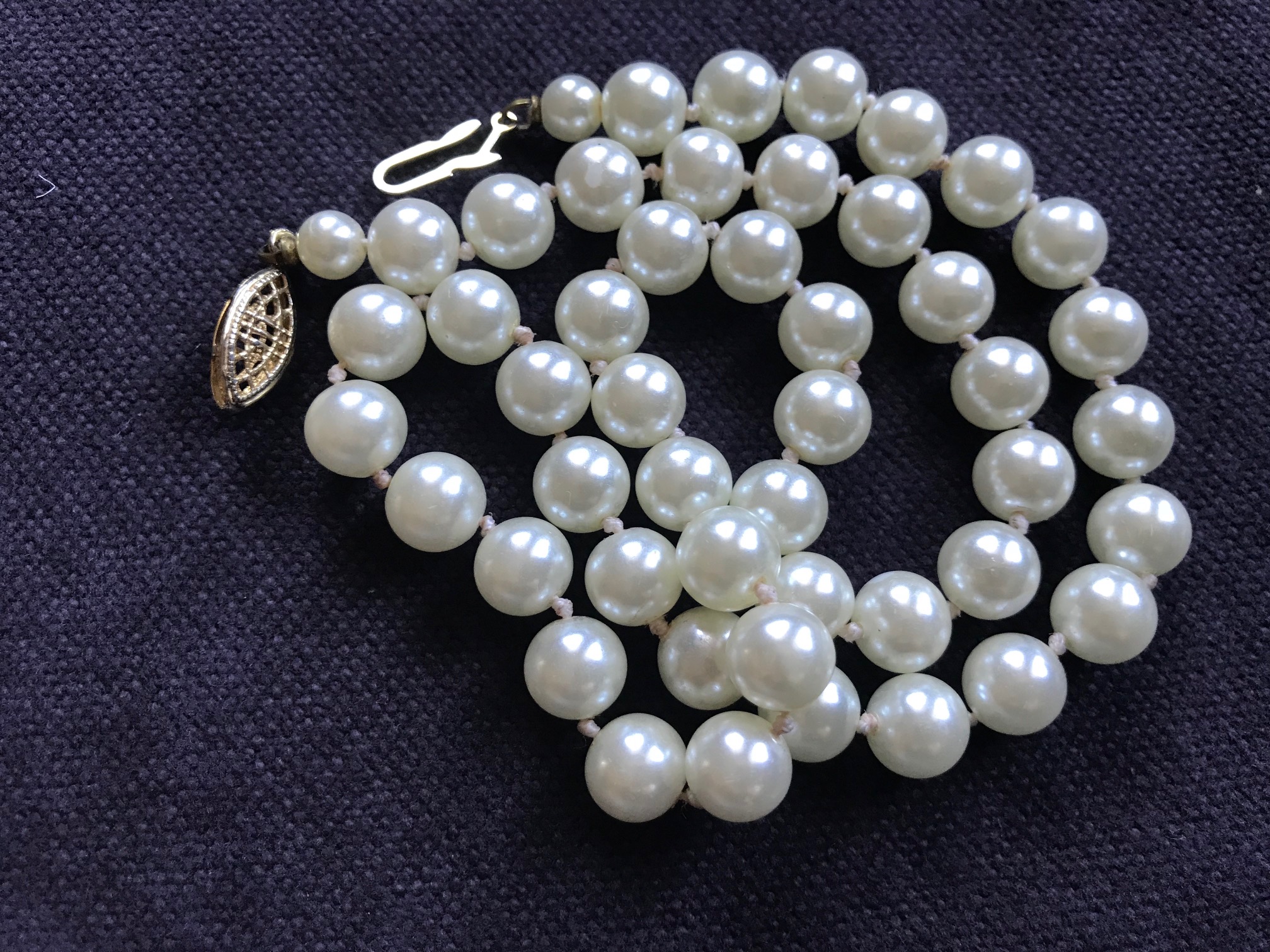#Leaded: Off-White Vintage Faux Pearls, Glass
For those new to this website:
Tamara Rubin is a multiple-federal-award-winning independent advocate for childhood Lead poisoning prevention and consumer goods safety, and a documentary filmmaker. She is also a mother of Lead-poisoned children (two of her sons were acutely Lead-poisoned in 2005). Since 2009, Tamara has been using XRF technology (a scientific method used by the U.S. Consumer Product Safety Commission) to test consumer goods for toxicants (specifically heavy metals — including Lead, Cadmium, Mercury, Antimony, and Arsenic). Tamara’s work was featured in Consumer Reports Magazine in February of 2023 (March 2023 print edition).
Click here to see some of the other “pearls” I have tested.
This is the third set of faux pearls I have published here on the site. Since there is also no mark or maker on these pearls (as with most vintage faux pearls), I will do my best to describe some of the qualities of this set that cannot be easily identified in a photo.
These may look and feel like real pearls to an untrained eye. They are an off-white/light cream color and fairly heavily weighted. They have an iridescent sheen that resembles the sheen of real pearls. They are individually knotted, which is something one expects in a strand of real pearls. The last pearl before the clasp is smaller than the rest of the strand, which is otherwise fairly uniform. The clasp looks like it might be made of gold. Because they are heavy, they sort of clink when they drop together (onto your hand or onto a table). Don’t be fooled, however! These pearls are Leaded glass and (in my experience) are also likely painted with high Lead paint to achieve the “almost real” pearl finish!
When tested with an XRF instrument, these pearls came in at 6,774 (+/- 195) ppm Lead (Pb). They were negative for cadmium (Cd), arsenic (As), and mercury (Hg). For comparison, Lead is considered toxic in newly manufactured items intended for use by children at 90 parts per million Lead and higher.
My concern with costume jewelry like this is that children (or even older teens and young women) are often seen with the strand of pearls pulled up from their neck and partly draped in their mouth as a fidget, it’s a very common thing to observe even if you don’t think you would be likely to do that yourself. Of course, it is never a good idea to put anything with Lead in it in your mouth. Additionally, for the faux pearls that are often painted with high Lead paint (and therefore often test positive with a reactive agent swab test), the micro-dust of the paint can easily wear off on the wearers’ hands, especially given the age of many of these pearls (often from the 1940s and 50s).
Note: the faux pearls that are made to look and feel like real pearls (the ones generally made of glass) are more likely to be painted with high Lead paint than the lighter plastic ones, although this is not always the case.
#SimpleSolution #SaferChoice: Buy only REAL pearl necklaces (modern real pearls can actually be found in pretty inexpensive options)and ideally with real silver clasps. Alternately, choose necklaces with natural stones. Here is an article with more information about that!
As always, please let me know if you have any questions!
Sincerely,
Tamara Rubin
#LeadSafeMama
Never Miss an Important Article Again!
Join our Email List









